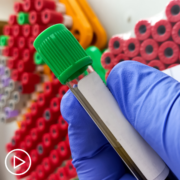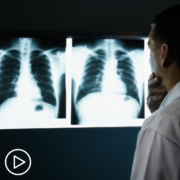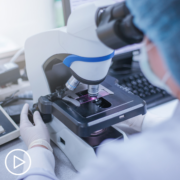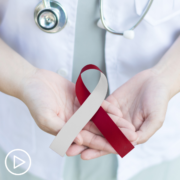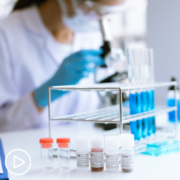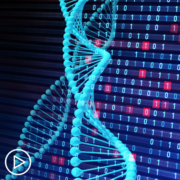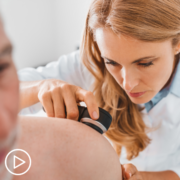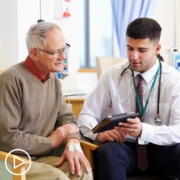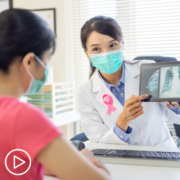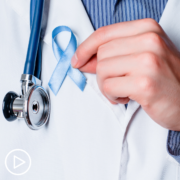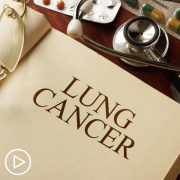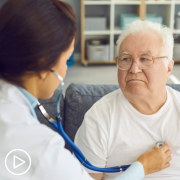On April 27, 2020, I received an email plea for help from Debra after she had read my book. Deb’s husband, Jeff, was struggling with a very malignant form of parotid cancer called Acinic Cell Carcinoma that, despite surgery and radiation, had spread to his chest and spine. Worse yet, there were no clear treatment choices available. Over the next 11 months, Deb & I have maintained an almost constant contact via emails and telephone chats. It has been my honor & privilege to get to know Deb. I am most impressed by her innate intelligence, rock solid determination and steadfast perseverance. Jeff is alive today primarily due to Debra’s tireless efforts to find a solution.
On my request, Deb has penned this story of Jeff’s illness. I sincerely hope that it will inspire other patients and caregivers to become more empowered. Remember, Knowledge is Your Superpower. Sajjad Iqbal, M.D.
My husband, Jeff, was diagnosed with high-grade acinic cell cancer of the parotid gland in February of 2018 at the age of 65. He was a very young, healthy 65, who rarely saw a doctor and needed no regular medications. For 37 years he was a teacher and coach at a small school in Iowa. We have now been married for 47 years, have three children and three grandchildren. Jeff retired early from teaching when he was 61, but continued coaching for several more years. He also did small construction jobs with our son. We spent a lot of time traveling by car throughout the United States. It was a shock to both of us to hear that Jeff had this disease since he seemed to be so healthy.
Several years before Jeff was diagnosed, he mentioned a small lump behind his ear. During a brief physical he had, he asked his doctor about it and was told to keep an eye on it and, if it got bigger, to see a doctor. In January of 2018, he noticed it was getting bigger so he saw the doctor. He was told he needed to get a biopsy but it was probably just a blocked salivary gland. As soon as I heard that, I figured it was cancer as Jeff’s mother had been diagnosed with salivary gland cancer many years before. Hers was a slow growing adenoid cystic cancer that was treated with surgery only. He had his biopsy done at a local hospital and when they said it was cancer, we had them make him an appointment at Mayo Clinic in Rochester, Minnesota which is only a couple of hours from our home.
He had further testing done at Mayo which also showed a lesion at the top of his spine. In March of 2018, he had two separate surgeries to remove the tumors. Cancer was also found in 9 of 21 lymph nodes. He came through the surgeries with no problems. Soon after, he received six weeks of radiation on both of those spots. This was much tougher on him than the surgeries. His neck was badly burned, nausea, no appetite, etc. He made it through and slowly got back to feeling normal. At that time, we were told that chemo wouldn’t help him so he never received any. Three months later, a scan showed a nodule on his chest wall. They did a biopsy and found it to be the same type of cancer. He had a cyroablation on that spot.
Two months later, we found out that the cyroablation had not worked, the spot was bigger and there were several spots on bone. He had Foundation One testing done on his tumor and it showed very few mutations. There was only one mutation, RET, that had a possible treatment at that time. There was a clinical trial at Mayo for a targeted drug for that mutation and they were able to get him in. He started on that in February of 2019. He experienced no side effects and the chest wall tumor stayed about the same the entire time he was on the trial. Unfortunately, though, it was not stopping the bone mets. He had radiation three days in a row on a couple of them when they started causing him pain. Because it was not stopping the bone mets, he discontinued the trial. His oncologist told us that he didn’t know of any clinical trials at that time that would help him. The only thing he had to offer was chemo and possibly Keytruda but he was doubtful they would help very much. Needless to say, this left us feeling lost as to what to do next.
The Mayo oncologist had told us that, in his opinion, clinical trials were the best way to go as you could get the newest treatments and you would be closely monitored. That is what I decided to look for first. Luckily, since Jeff was first diagnosed, I had been doing research on his cancer and possible treatments. There wasn’t a lot as it is a rare cancer. I have no medical background but was determined to figure things out as much as I could and find something that might be able to help. I found three clinical trials that I thought might work for Jeff. These trials did not exist when Jeff was first diagnosed. I sent them to his Mayo oncologist who had told me that he would be willing to look over a clinical trial if I found one. He agreed that the one I was most interested in looked like a good possibility and one of the trial locations was Iowa City which is about 3 hours from us. This is a trial that focuses on the genetic makeup of the cancer instead of the type of cancer. One of the mutations that Jeff has is FANCA and this trial was the first one I found where FANCA was one of the mutations they were looking for. Also, Jeff’s mother, who also had salivary gland cancer, is a carrier of the FANCA gene. There is no known relationship between the FANCA gene and salivary gland cancer but I feel there must be a connection. It is a rare cancer and to have a mother and son have it must be extremely rare. Our children have been tested for this gene and we discovered that our son is also a carrier.
It was in February of 2020 when we went to Iowa City to try to get Jeff into the trial. We found out that they had changed the requirements for the trial and now you had to have had chemo in order to be accepted. The doctor started Jeff on the oral chemo drug, Xeloda, and told us that if anything grew, he would stop the chemo and try to get him in the trial. Jeff was also having some rib and back pain and that was treated with five days of radiation therapy. Following those treatments, he had some heartburn issues for a couple of weeks after which it slowly resolved.
At first, the chemo wasn’t too bad. Soon though, there were many nasty side effects; peeling palms and bottoms of feet, nausea, no appetite, etc. He did not feel up to doing much and spent a lot of time sitting or lying down. He was on this about five months and decided to stop due to the side effects. He was having some back pain during his chemo and was prescribed a narcotic pain reliever. It helped the pain some, but caused constipation, so he had to take more medication for that. He told the doctors he did not like taking the narcotic drug and wanted to find another alternative. They tried one drug and the first night he took it he ended up fainting and having make a trip to the hospital. Needless to say, we stopped that drug right away! They said he was having nerve pain from his spine but were not able to find the exact source. He ended up having a vertebroplasty on his spine as they thought it might help his pain.
Unfortunately, it didn’t help the pain and he also started having a weird feeling of a tight band around his abdomen. We made a trip back to the Mayo Clinic to see a pain specialist there. He thought Jeff might be helped with a nerve block on either side of his spine. He had this done and, not only did it not help, it made the band feeling we were trying to get rid of feel even tighter! This was very disheartening as we really thought it would help. Iowa City had started him on Gabapentin for his nerve pain and had been slowly increasing the dosage. He was also started on a low dose of Lexapro and, between those two drugs, he started to feel less pain in his back. The “band” feeling is still there, but not as bad as it once was. He was finally able to get into the clinical trial in August of 2020. The drug he is on now is a parp inhibitor that targets the FANCA pathway. He has been on this drug for about seven months now with almost no side effects. The targeted tumor has shrunk quite a bit and the bone mets have stayed the same. Unfortunately, on his last scans, there was a new spot on his liver. He was allowed to stay in the trial as it is working on his targeted tumor and he is scheduled soon for microwave ablation on his liver.
When one treatment stops working, I always look for a new clinical trial first.
It is hard, however, as so many of the trials are for certain types of cancer. Even though you discover (from the mutations) that a certain drug may help your cancer, you can only be in that trial if you have a certain type of cancer. I hope in the future there are many more trials based on the genetic makeup of the cancer rather than the type of cancer. The other problem is that the majority of trials are held at larger hospitals that are just too far away to go back and forth as often as needed. It would be great if there were a way to have some of the treatments done at a larger hospital in your own state. Also, if you have a rare cancer, it is much harder to find clinical trials.
I have a library background and have always relied on books and articles to find information about various topics. Now that the internet is available that has been my most important tool at this time. Also, websites like PEN, providing patient’s stories, healthy recipes and classes are very helpful. These types of sites have really helped me feel not so alone and have given me much more hope than I have ever received from any oncologist. It is also over the internet that I connected with Dr. Sajjad Iqbal after reading his book “Swimming Upstream.” He has been very generous with his time and willing to give suggestions and advice as he has a cancer similar to Jeff’s. It has been a great comfort to me to be able to e-mail him to get his opinion on something or ask a question. He has also helped me feel more hopeful than anyone else I have talked to – not only by his words but by his courageous example.
When Jeff was first diagnosed, he was still coaching track. The entire track team wanted to have a benefit for him and sold t-shirts and wristbands, and had a meal and dodge ball tournament to raise money for him. Jeff is a very popular guy in this rural school district and I know it meant a lot that his team did this for him. We have support from our family and friends and feel that we have people we can call if we need something. The pandemic has kept us from getting together with people as often as we would like but we are looking forward to that in the future.
We know that there is a good chance that Jeff’s cancer may never be cured. If that is true, I would like the next best thing – for him to live as long as possible, as well as possible with the cancer. We have had three very good years living with it and working around his medical appointments. I will do everything I can to help him have more of those years.
Jeff has handled this whole situation very well from the beginning. He is a pretty laid-back person who takes things as they come and isn’t much of a worrier. He has kind of set an example for me just by taking things as they come. I feel his job is to fight the cancer and my job is to help him fight the cancer. Our lives are pretty much the same as they were before he was diagnosed – only with a lot more doctor appointments!
Sajjad Iqbal is a physician and cancer survivor. Almost 17 years ago, Sajjad learned that he had an extremely rare and most malignant type of parotid cancer called Salivary Duct Carcinoma. He was given a 30% chance of surviving for 2 years. Because of Sajjad’s medical training and his unwavering sense of hope & determination, he was no ordinary patient. Sajjad researched his condition and proposed a treatment method for himself that stopped the progression of cancer cells. Although Sajjad is still living with, and still fighting, the cancer, he continues to defy the odds with no end in sight. To inspire other cancer patients, Sajjad Iqbal has chronicled his amazing cancer journey in the form of a book titled, “Swimming Upstream, My Struggle and Triumph over Cancer and Medical Establishment.”

